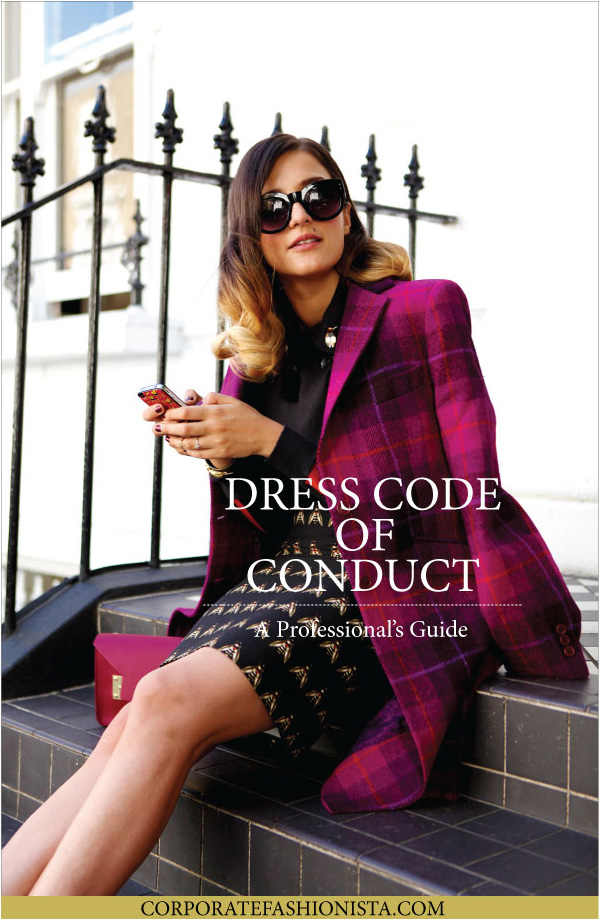
‘No way can I get away with that at work!’ Do you ever find yourself inspired by a fun fashion trend, but immediately shut it down, because you think you can’t possibly wear it to work?
It’s true, the challenge of figuring out what exactly is and isn’t acceptable fashionable work attire can be confusing.
All too often, official employee dress code policies are antiquated and vague, while others are so strict and limited that you have to remove SNS nails, cover tattoos and remove piercings, depriving employees of their individuality. Implicit guidelines can make what to wear to the office even more mystifying. The scope of the business casual definition alone is incredibly broad – even casual Friday‘s mean one thing at one company or industry and something completely different at another. And then there are your colleagues, a work community you wish to be a part of without giving up your individuality and authenticity. In some cases, workplace dress codes can be so restricting that some employees are unable to wear clothes or jewelry related to their religious beliefs. Despite the fact that this should be exempt from such rules, it does happen. If you are in this predicament, it may be wise to retain an employee discrimination layer by going here, or speaking to a local lawyer who can help you state your case. Dress codes are important, but they should not hinder important issues.
Back to it, of course, you do great work and want to be taken seriously. But, you also understand the value of visual presentation and love to express your competence through what you wear. Unfortunately, when most companies design dress codes, they seem to take the “uniform” approach, so that employees end up feeling they’ve lost their freedom of expression, not just in dress, but in initiative, creativity, and vitality, as well.
Regardless of your company’s dress code, you’ve got your career to manage!
I’ve got a simple 3-step solution to an otherwise complex quandary that will allow you to show that you mean business at work and create connections like crazy while still maintaining your fashionable aesthetic.
STEP 1
Re-read the dress code presented in your company handbook. This will allow you to get a better understanding of the style boundaries. Remember, a dress code is usually established to prevent employees from offending others with their attire. Some companies believe denim jeans fit into this category, others don’t. Some fields expect you to wear pantyhose, others don’t. Whether you agree with your company dress code policies or not, it is still vital to represent your company, your department, your brand, your country, etcetera in a positive light.
STEP 2
Take some time to objectively observe what your colleagues, boss and boss’s boss are wearing to the office. This will give you insight into your company’s implied dress code boundaries. Discover who is using clothes to create a connection at the office? And who is using them to create a distance and alienate the community? Your ultimate goal is to find different ways to look and feel connected with your company community and still express yourself with your professional look. Find out who’s getting it right and who’s not at the office.
STEP 3
Now that you know both the expressed and implicit dress code rules, you’re ready to effectively dress for success. The best career game move, in terms of style, is to visually present yourself as being a member of your professional community, but, of course, still being who you are. Both objectives are important and critical for success.
So, wear your vitality in appropriate and flattering fashion trends at the office, but don’t let the trends wear you. What do I mean? Just as you’ve heard a million times before regarding Red Carpet fashions, the outfit must be right for the event or occasion and it must not take center stage and overpower the wearer. Otherwise, you run the risk of your visual message becoming about the dress (or the outfit) rather than about you.
At work, wear trends and style your outfit in a way that reflects your professional responsibilities and, yet, makes you appear accessible. I am proposing an appropriate and inviting approach to professional style that still allows you the freedom to express yourself through your attire. When in doubt, I recommend opting for the most conservative version of a fashion trend (ie. individual pieces or an outfit expressing an overall, classic design with a trendy twist or accent) and then sparingly incorporate it into your polished, office-worthy outfit.
What are your concerns about company dress code policies? Do you find your company’s definitions to be clear and respectful? Please share!
Image credit: Photograph of Eleonora Carisi by Jessie Bush for We The People. Graphics by Kristina Moore for Corporate Fashionista.
